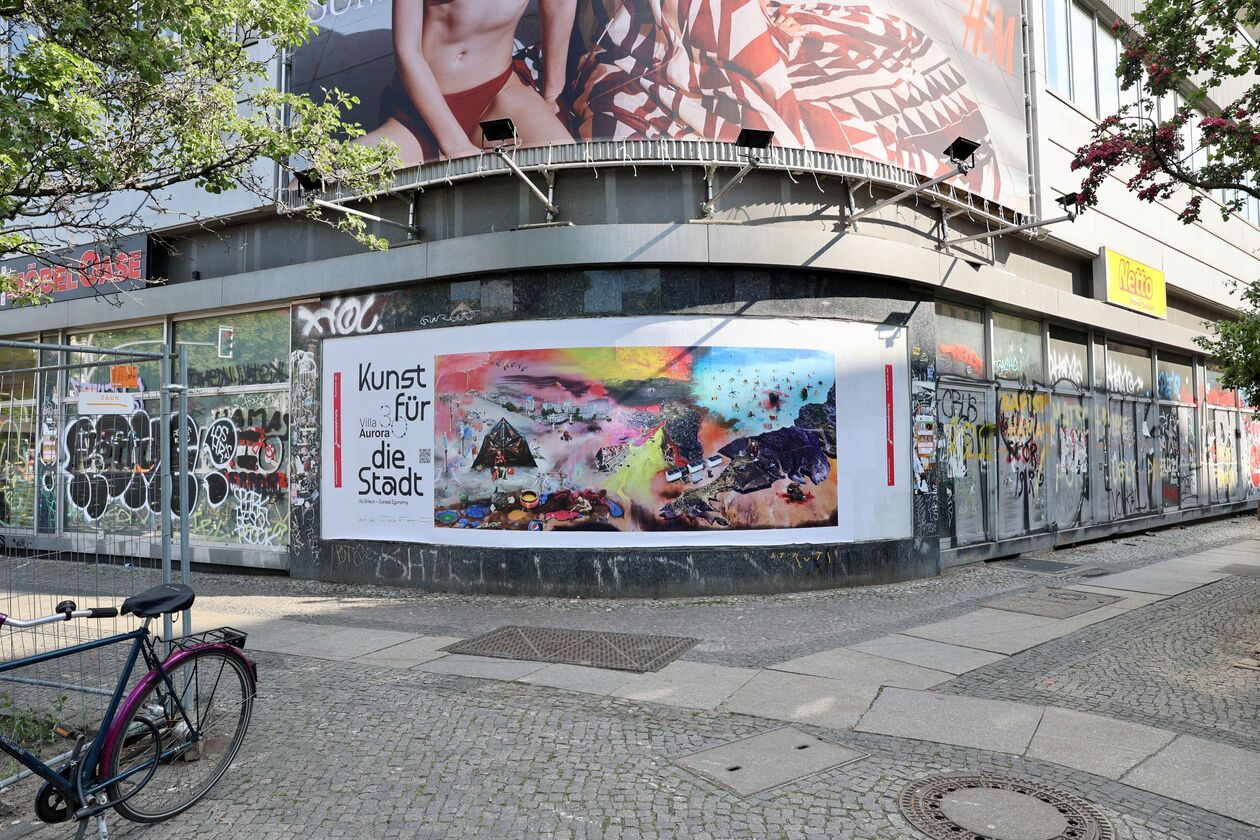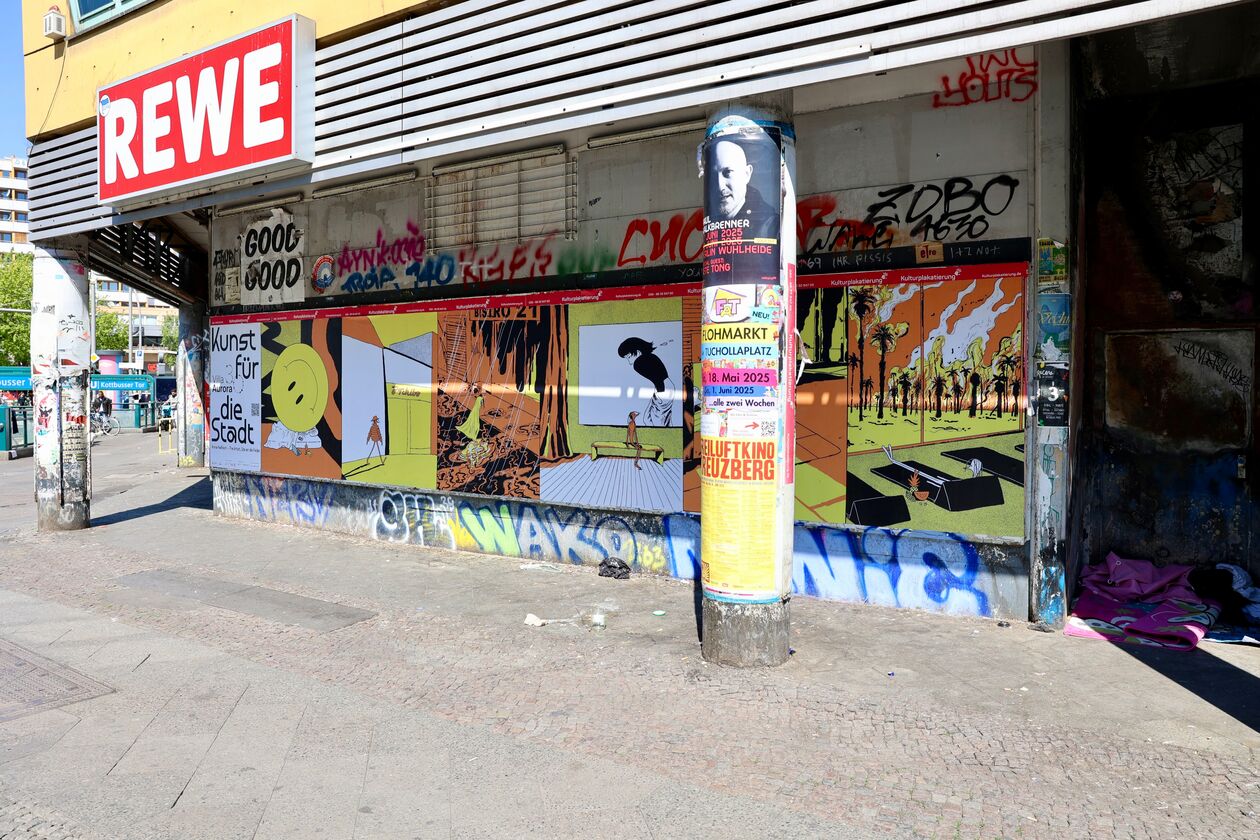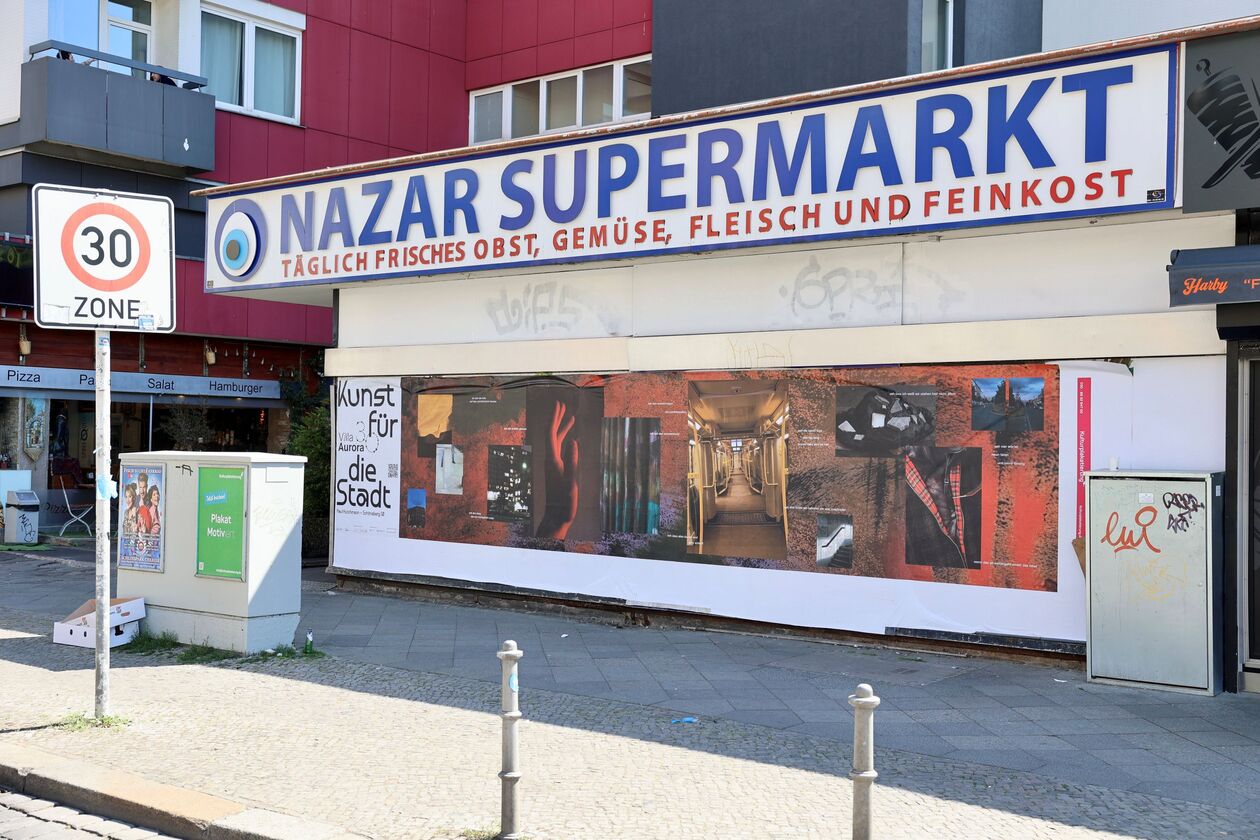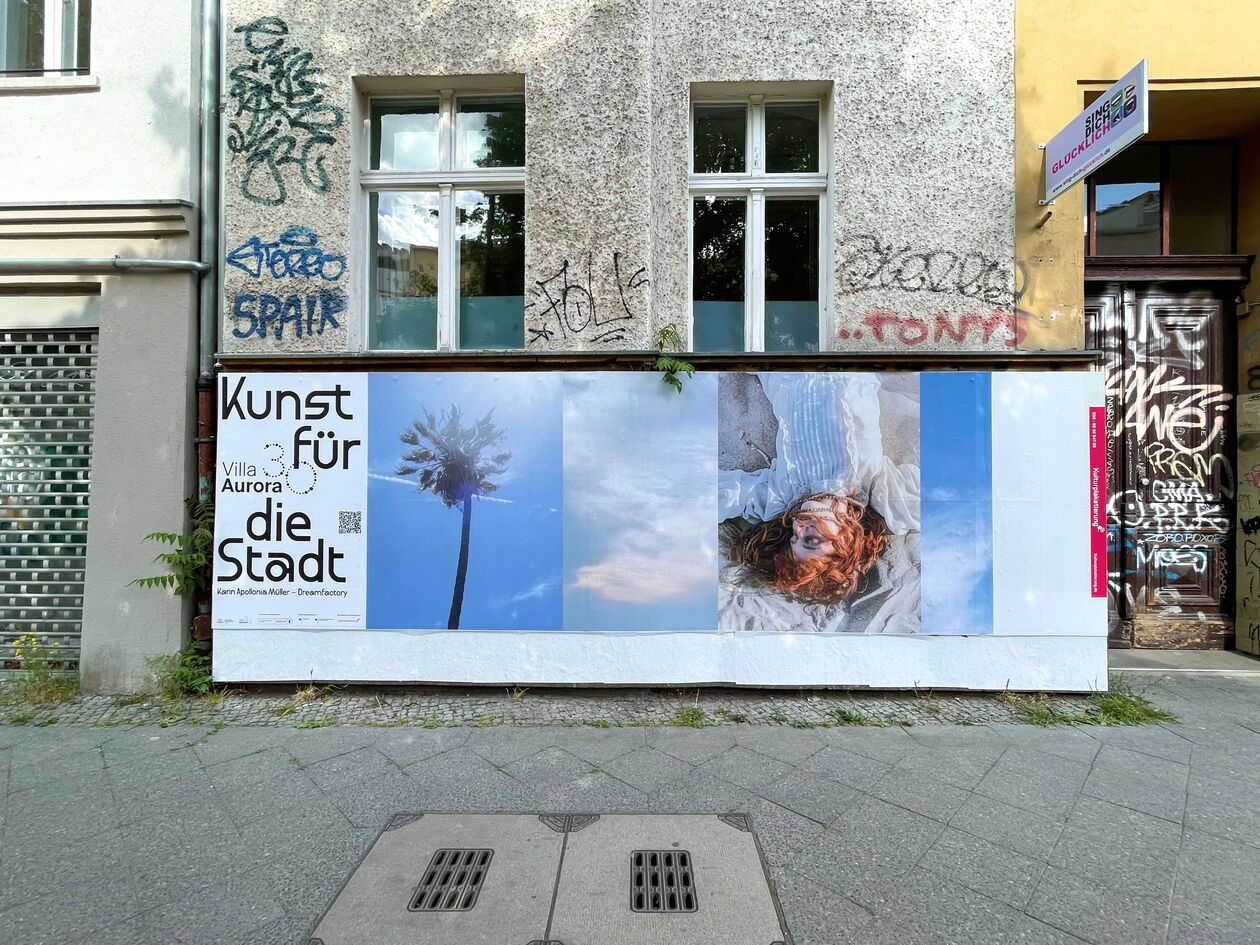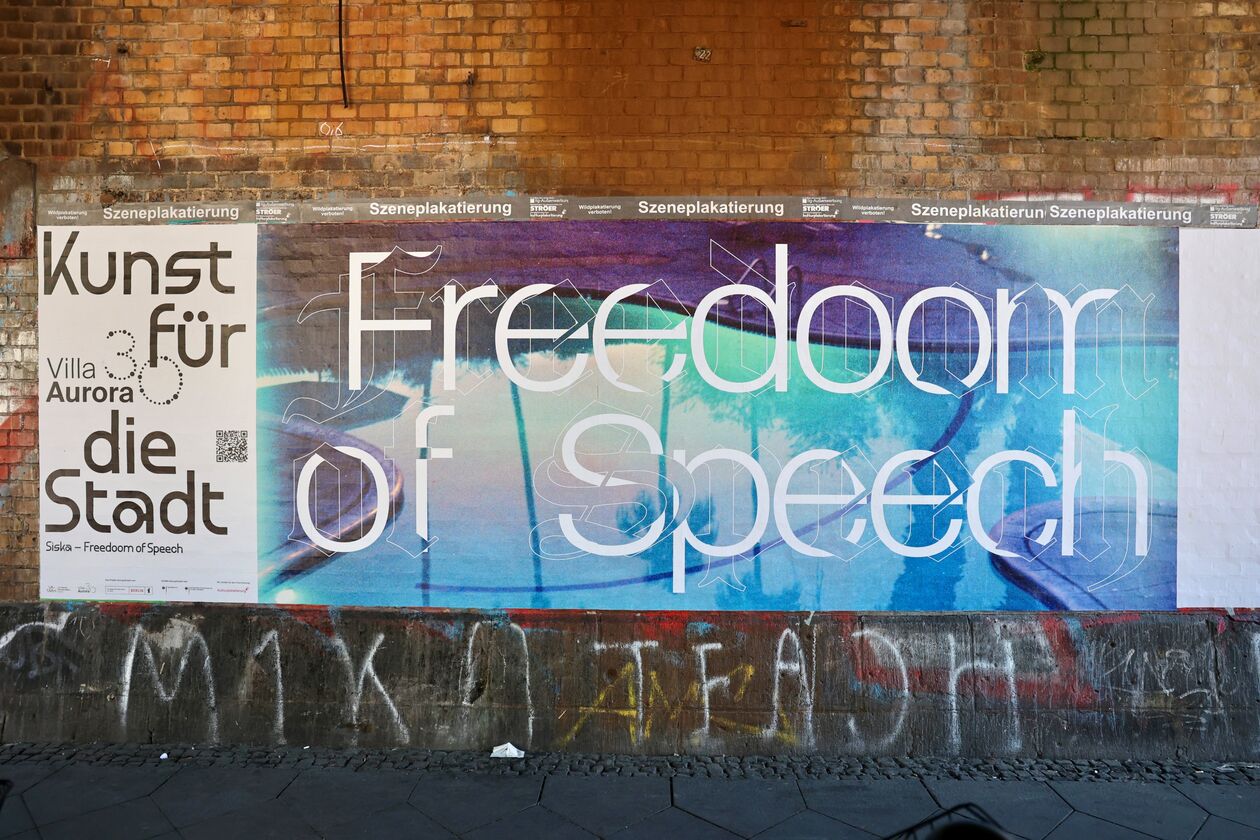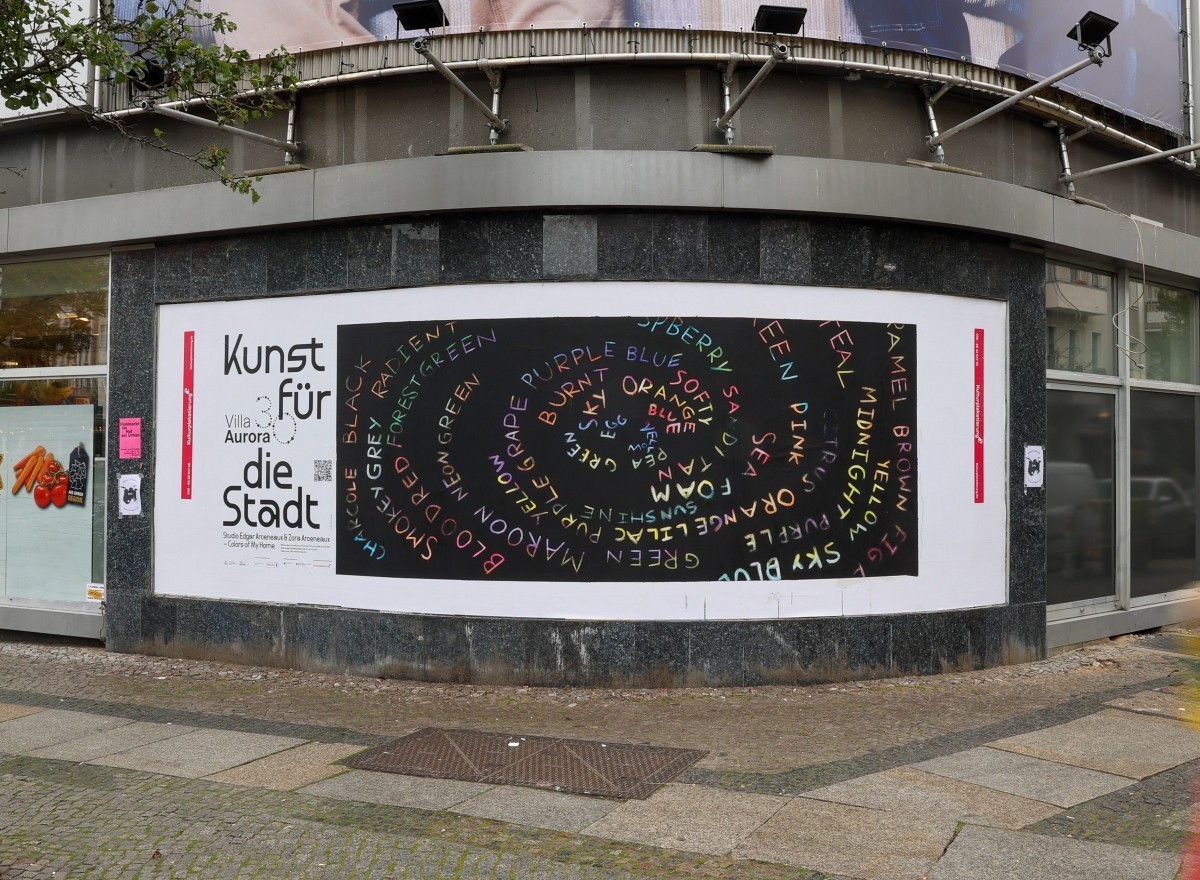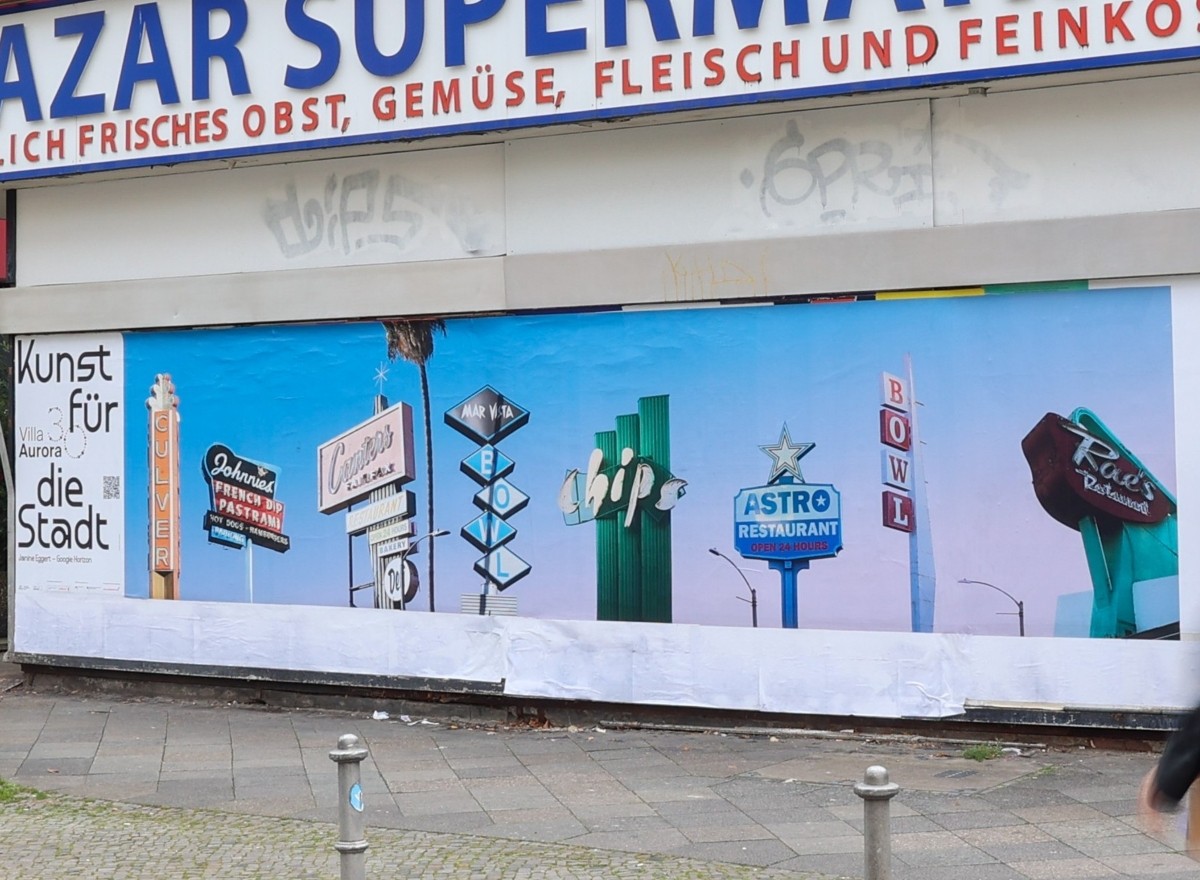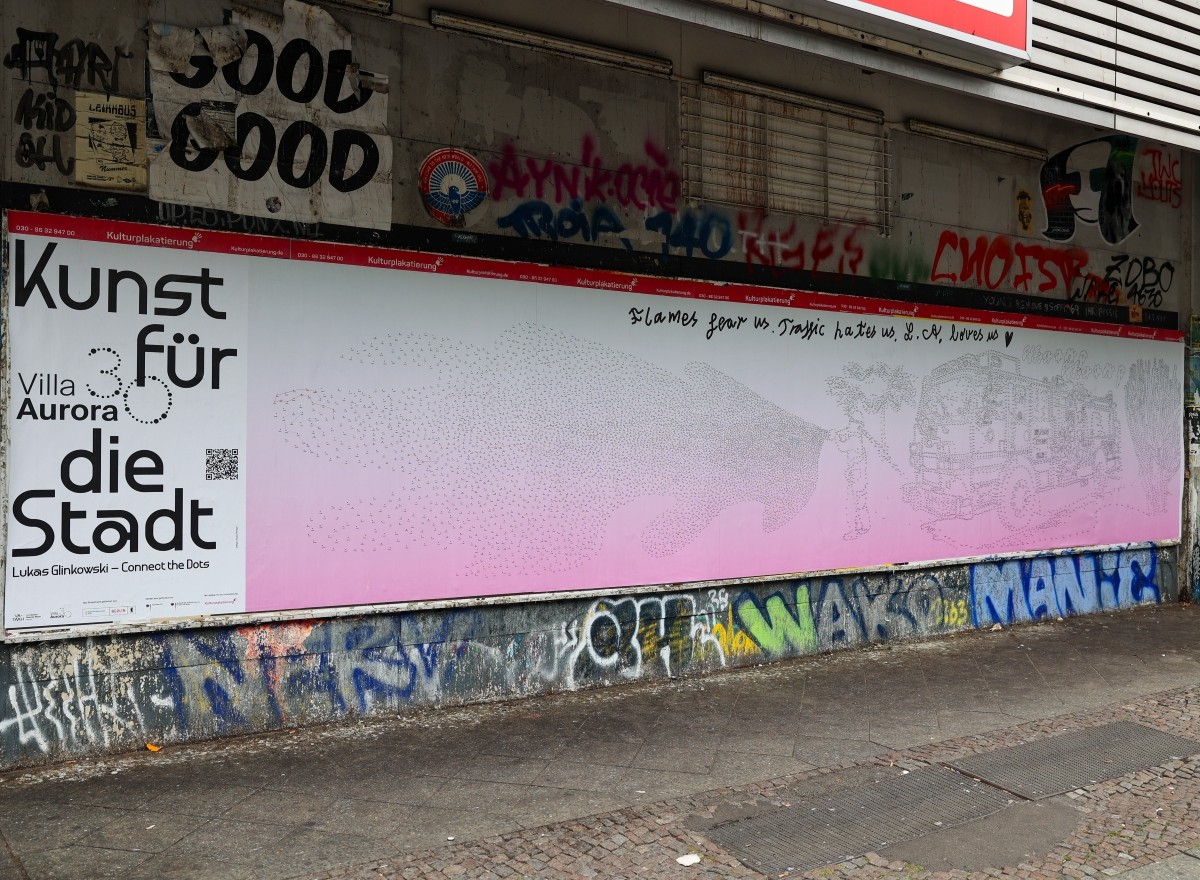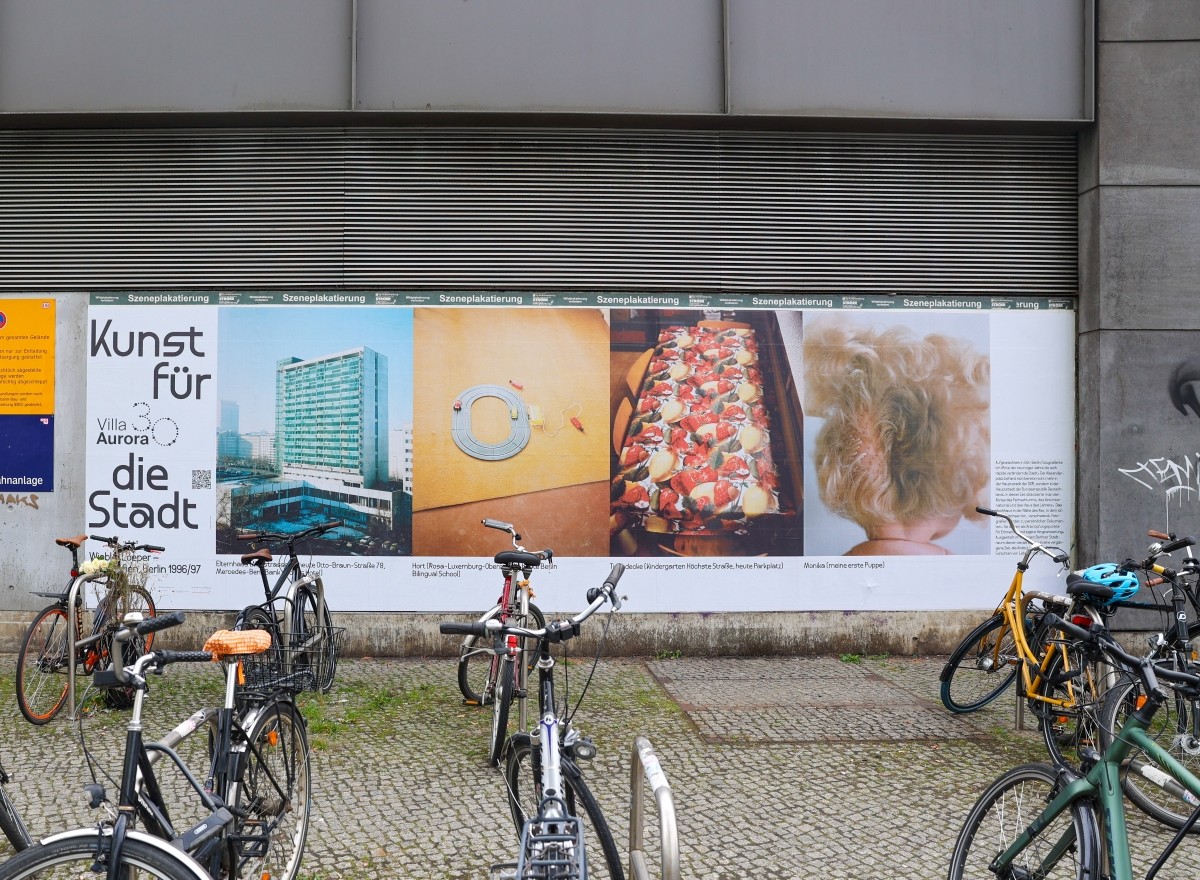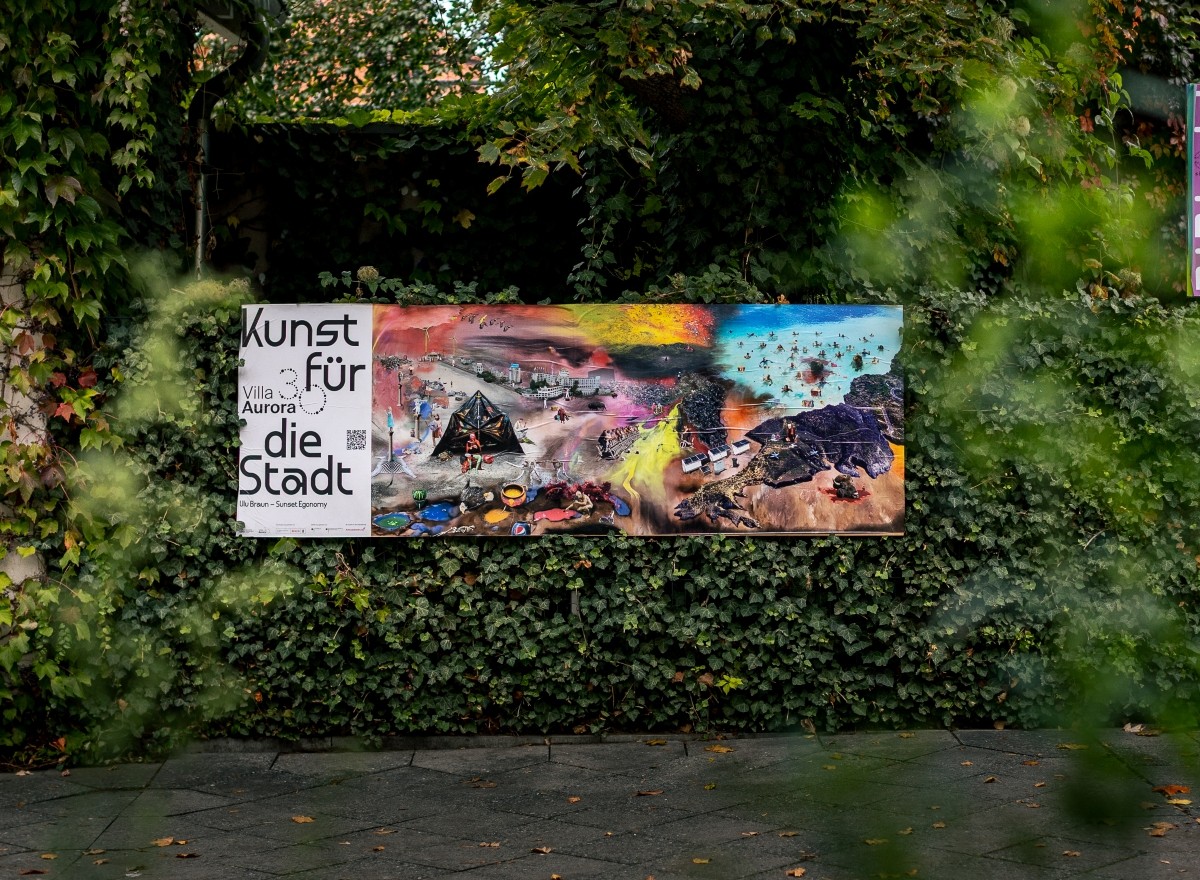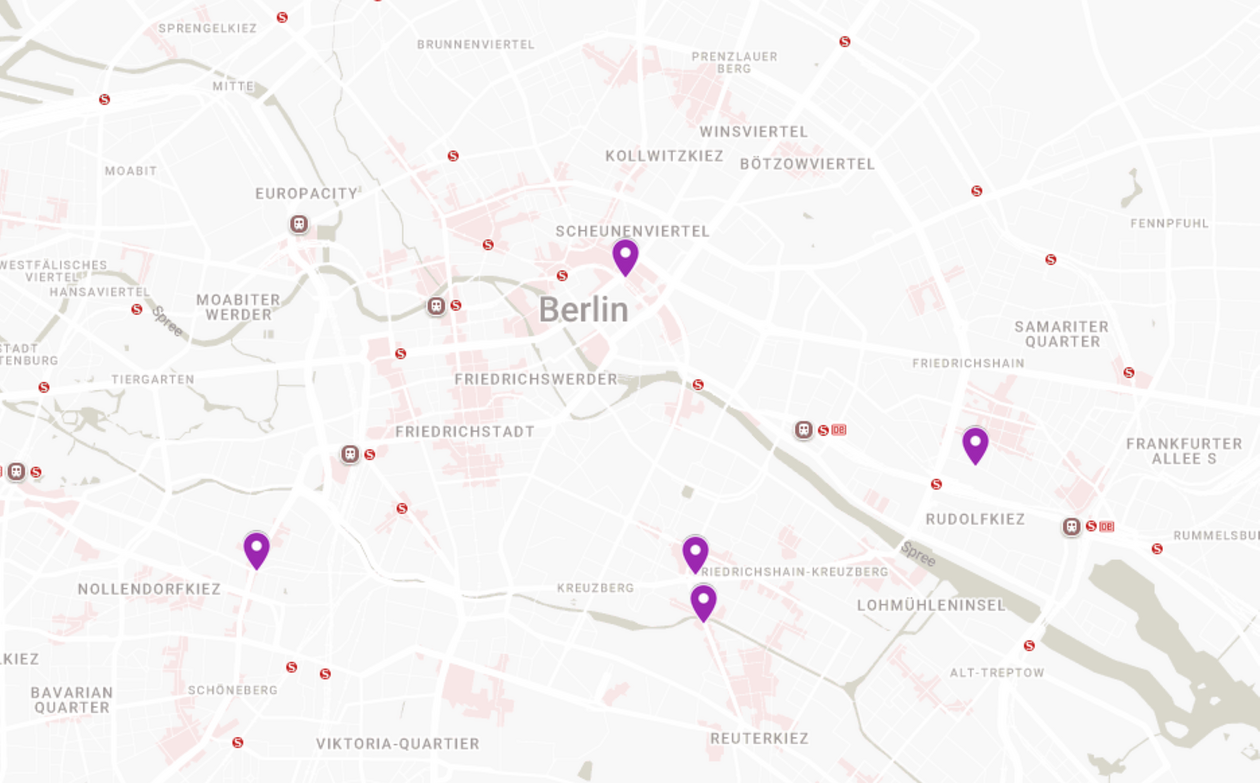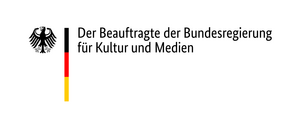
Erik Göngrich
ART HEALS
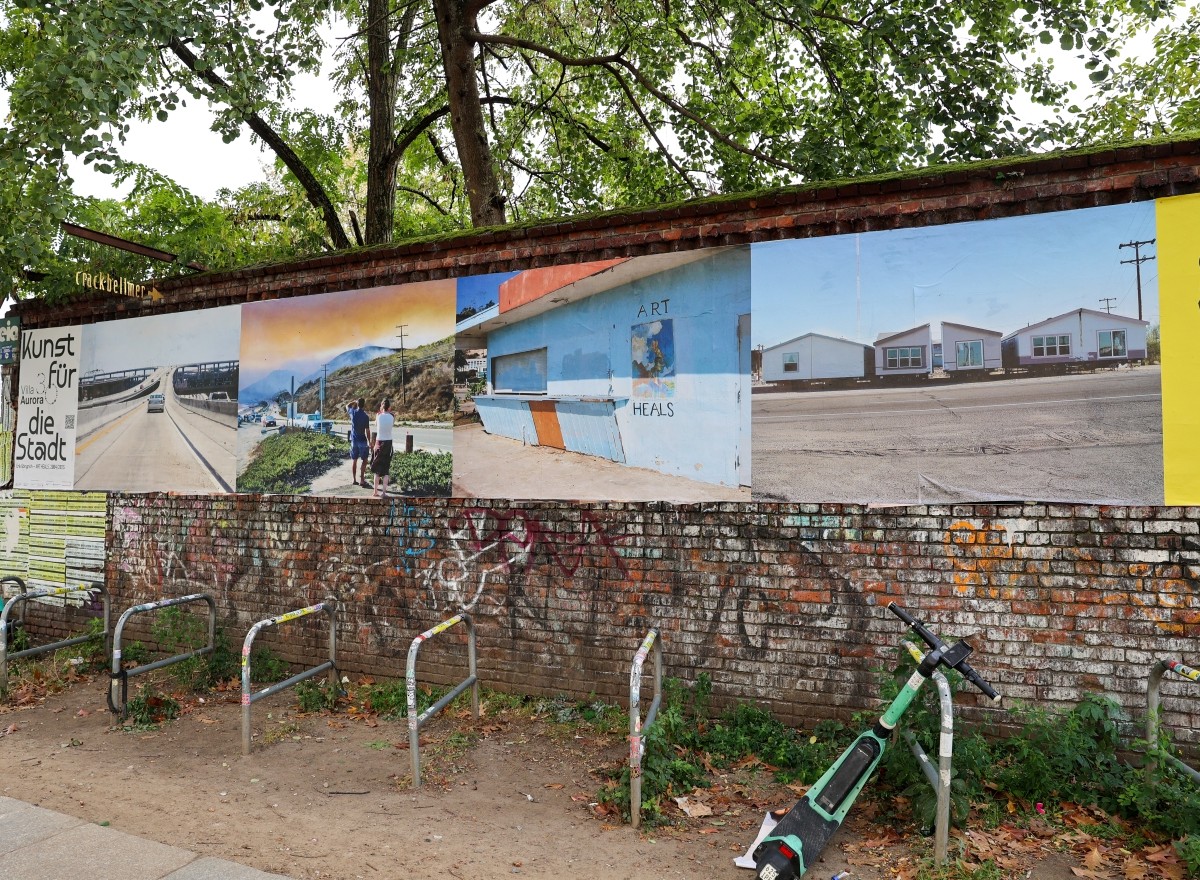
For many, Art in the City first appears as something uninvited—suddenly present, simply there. Yet our perception of things and situations evolves: what already exists is reinterpreted, and spaces take on new meanings.
Erik Göngrich conceives and presents art as a cycle. It is never a finished object, but an ongoing process—both in content and in form.
The recycling of materials, ideas, and stories always gives rise to something new. This process becomes tangible in the poster: alongside cars—on seemingly oversized highways—and threatening images of forest fires, the words ART HEALS appear. Especially in contrast to the clouds of smoke its meaning shifts: art not only demonstrates its healing power in the use and further development of what already exists but also reveals how closely it is linked to our present.
The images, drawn from 2003, refer to a shared responsibility for how we treat our environment: in this sense, the mobile house, which can be moved again and again and enlarged or reduced in size as needed, suddenly becomes an entropic sculpture by Robert Smithson and Gordon Matta-Clark.
Here, recycling and reuse are understood not just as ecological practices, but as cultural and social necessities.
Göngrich's work therefore asks: Could art itself—understood as a process of re-responsibility—be a healing act?
About the Artist
Erik Göngrich is an artist working in the public domain dealing with artistic and climatic questions. He is using various methods of collaborations in his urban praxis. His working tools could be exhibitions, guided tours, documentary sculptures, books, architectural pavilions, furniture and cooking sessions. Existing spatial and social situations become the starting point for a multi-year, often collaborative process in which a time-, user-, and location-specific work of art is developed. The Satellit, a collaboratively curated project space in Berlin, can also be understood in this sense. With the Mitkunstzentrale and the Pilz-Kunst-Labor in the Haus der Materialisierung—a center for climate-friendly resource use located in the Haus der Statistik on Alexanderplatz in Berlin since 2020—he initiated a workshop for collective knowledge production. By recycling materials, ideas, and stories, it addresses material cycles, art, the public sphere, and society in times of climate emergency.
About the Project
To celebrate the 30th anniversary of Villa Aurora in Los Angeles, the artist residency has invited former fellows to design large-scale posters as individual artistic contributions to Berlin’s urban landscape. Displayed across diverse public locations in the city, the works forge a connection between art, urban society, and international perspectives.
Art in the City reflects the rich diversity of both Berlin and Los Angeles. The artworks draw on the unique character of specific neighborhoods, building symbolic and aesthetic bridges between urban life in Berlin and the Californian metropolis, while also engaging with pressing social and political issues.
The project seeks to make art more accessible to a wider audience and to strengthen the visibility of the cultural scene. Art in the City offers an inviting and unpretentious glimpse into the vibrancy and international relevance of Berlin’s arts landscape: Art for everyone – art in the city.
From October 6 to 19, the artworks of six artists will be on display in Berlin.
Edition in May
With I am Your Temple, Werner Amann brought his Los Angeles–based portrait series to Weserstraße in Neukölln. In contrast to the youth- and trend-driven beauty industries of Berlin and L.A., Amann captures older bodies in quiet, intimate moments of everyday life.・Weserstraße/Fuldastraße
Ulu Braun’s Sunset Egonomy appeared as a digital mural on Kottbusser Damm—a spiritual overload of West Coast myth, Silicon Valley twilight, and pop-media iconography. Martin Scorsese makes a cameo with ice cream; a piggy bank from a savings bank rests beneath a vision of automotive prophecy. Sunset Egonomy is both dreamscape and dissociation, promise and void.・Kottbusser Damm 1
For an artist, there's always something to do on an ordinary May day—buy a pasta claw, visit an exhibition, draw a snake, or get a haircut. In her poster The Artist, Ode to the Pen, Anna Haifisch offered a playful and personal perspective on life in metropolises like Berlin and L.A.・Skalitzer Straße/Kottbusser Tor
Paul Hutchinson’s collage Schöneberg 30 brought together texts and images from 2016 to 2025. Much of the material originates from the very neighborhood where the collage is on display—the northern section of Berlin’s Schöneberg district, once known by its postal code: Schöneberg 30.・Potsdamer Straße/Kurfürstenstraße
Karin Apollonia Müller’s Dreamfactory explored the relationship between sky, nature, and human presence. It evokes a moment of timeless stillness and contemplation, while the expansive openness of the scene stands in stark contrast to the density of urban space. The work challenges the seductive imagery and promises of the fashion world.・Prenzlauer Allee 238
Freedoom of Speech, a photo series by Siska created during the artist’s 2022 residency at Villa Aurora, takes a critical look at the shrinking space for free expression in both Germany and the U.S. Inspired by the Old English typeface often seen on L.A. streetwear, the visual language in the work becomes a pointed intervention—highlighting the fragility of liberal democracies.・Yorckstraße 49
Edition in October
Edgar Arceneaux & Zora Arceneaux invited passers-by on Kottbusser Damm to actively participate in designing the poster for Colors of My Home. Based on the question: What colors remind you of home? a colorful image emerges that visualizes the diverse perspectives on the concept of “home” in the neighborhood.・Kottbusser Damm 1
Googie Horizon by artist Janine Eggert combined eight examples of Googie architecture that she photographed in Los Angeles and assembled into a silhouette. As an imaginary skyline, the artwork becomes both archive and fiction—a cityscape that never existed, yet embodies the promise of a futuristic everyday world.・Potsdamer Straße/Kurfürstenstraße
With ART HEALS, Erik Göngrich presented art as a cycle. His poster features images of cars and forest fires alongside the words “ART HEALS.” In contrast to the clouds of smoke and destruction, the question arises as to whether art itself can be understood as a healing process.・Entrance RAW/Simon-Dach-Straße
For the Kottbusser Tor, Lukas Glinkowski has created Connect the Dots, an interactive connect-the-dots image with over 10,000 dots. The work was inspired by the artist's personal experiences during his stay at Villa Aurora in 2019. At that time, he witnessed forest fires in Pacific Palisades at close range. The work is dedicated to the efforts of the firefighters.・Skalitzer Straße/Kottbusser Tor
Growing up in East Berlin, Wiebke Loeper photographed the rapidly changing city in the mid-1990s. At that time, there was discussion about demolishing the television tower and the Kino International cinema. With Fotografien, Berlin 1996/97, Loeper builds a bridge to a bygone era and draws attention to the multi-layered aspects of urban life.・Alexanderplatz
silent green Special
Together with silent green Kulturquartier, we displayed the Sunset Egonomy poster in Wedding, which was already on display in urban spaces during the first edition of Art in the City. Ulu Braun presents a digital mural —a spiritual overload that blends West Coast myth, Silicon Valley twilight, and pop media symbolism.・silent green/Gerichtstraße 35






